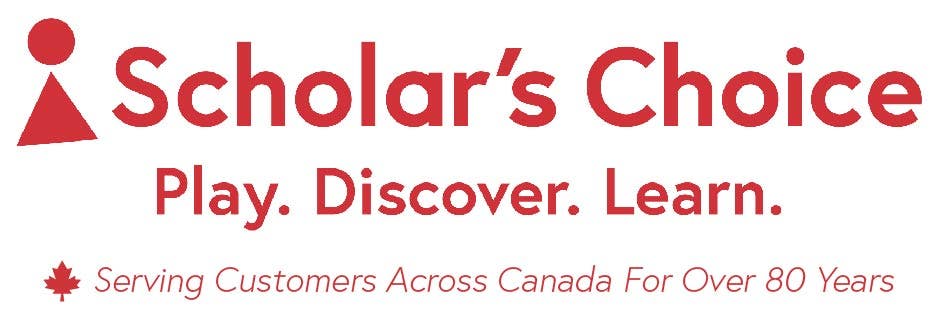

Blog: Unlocking Creativity and Growth: The Benefits of Mark Making in Early Childhood Education
As early childhood educators, our primary goal is to nurture young minds in a way that fosters curiosity, learning, and development. Among the myriad of activities we can introduce in our classrooms, mark making stands out as a fundamental component of early education. This seemingly simple act of making marks on a surface is a powerful developmental tool that goes beyond artistic expression. It plays a crucial role in children's cognitive, physical, and emotional growth. In this blog, we will delve into how mark making activities, when integrated with play-based learning strategies and sensory exploration, can significantly enhance fine motor skills and overall early childhood development.
Mark making is often considered the precursor to writing. It involves drawing lines, dots, circles, and other shapes, and is not limited to just paper and pencil. Children can engage in mark making using a variety of materials and textures, which not only ignites their sensory awareness but also sparks immense creativity. Whether it’s drawing in a sand tray, painting with water on a chalkboard, or scribbling with crayons, the activities are as enjoyable as they are educational.
This introduction to mark making will explore how these activities support the foundational aspects of learning and development in young children, equipping them with the skills necessary for successful progression in more structured educational settings. Join us as we uncover the multifaceted benefits of incorporating mark making into early childhood curricula, creating a vibrant tapestry of learning opportunities that encourage young learners to express themselves while developing crucial life skills.
Mark Making Tray
This activity is a great way to encourage children to explore sensory play and pre-writing skills! In a tuff tray cut a sheet of paper to the size of the bottom of the tray and tape it down. Draw different marks on the paper around the tray and offer markers! You can also place pre-writing stones or pattern cards in the tray and encourage children to explore!
What is mark making and the importance for your child’s development? Mark making simply refers to the creation of different patterns, lines, textures and shapes. This term is used to describe the scribbles that children make!
Mark making is the beginning of a child’s journey towards writing and is an important step in a child’s development for handwriting, creativity and coordination.
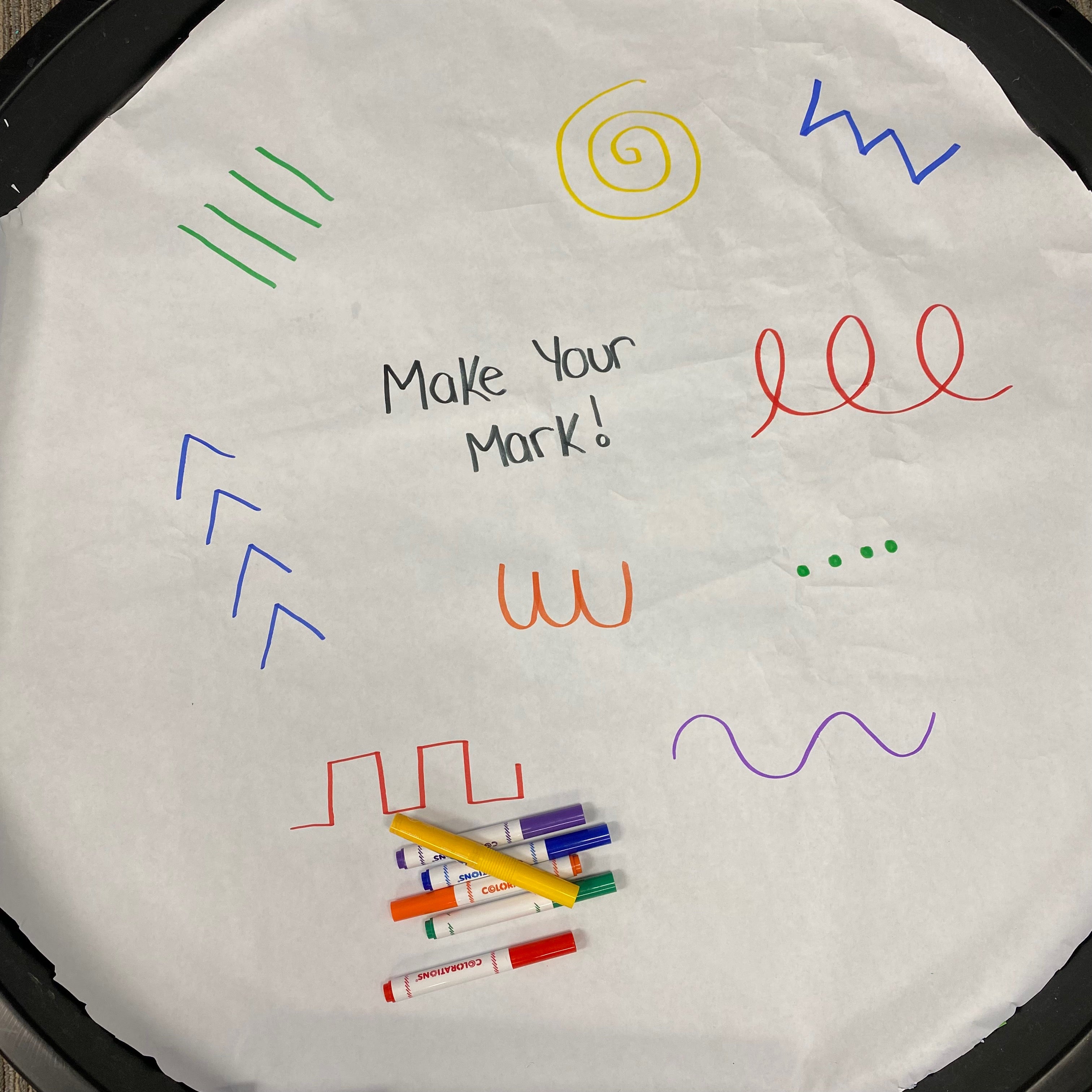

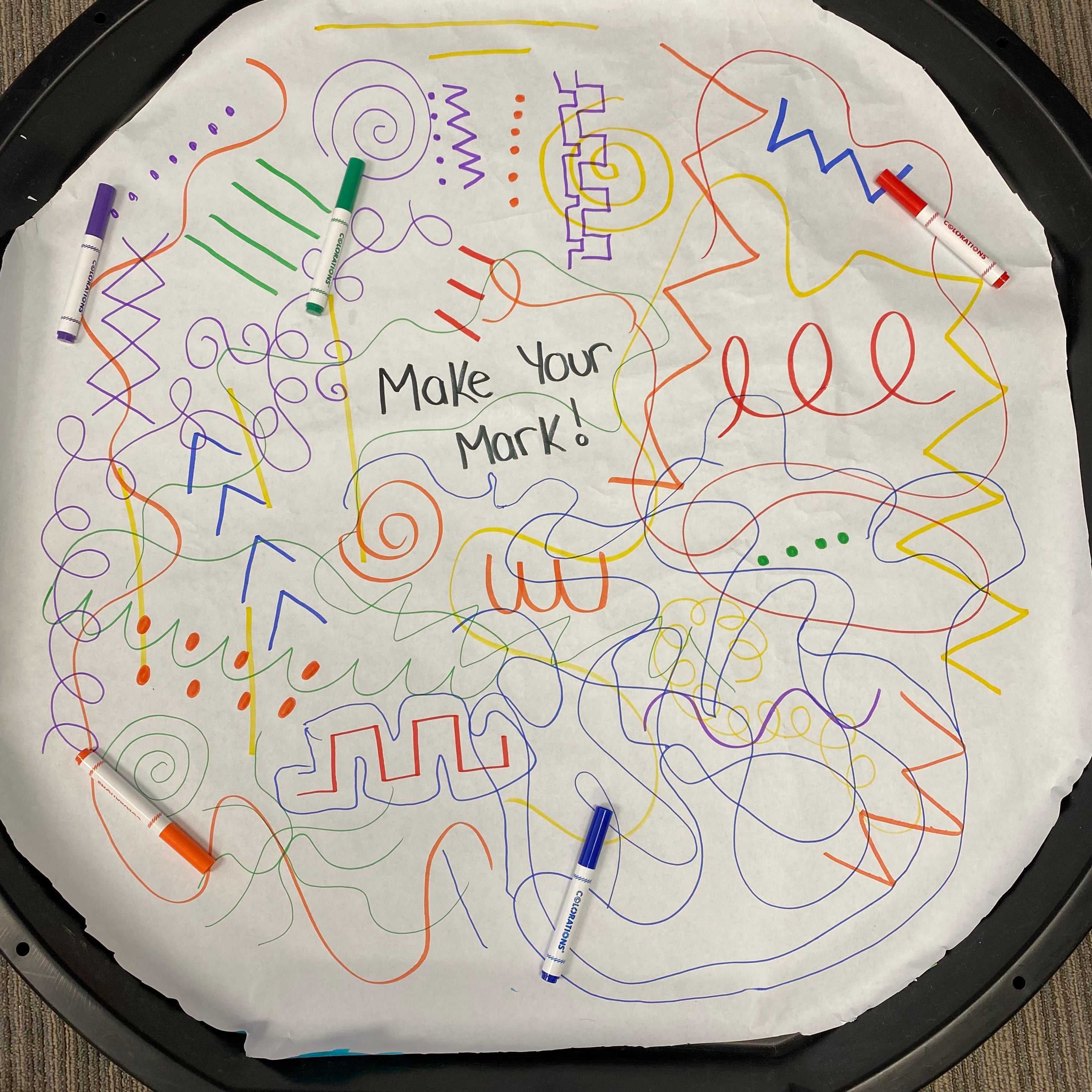

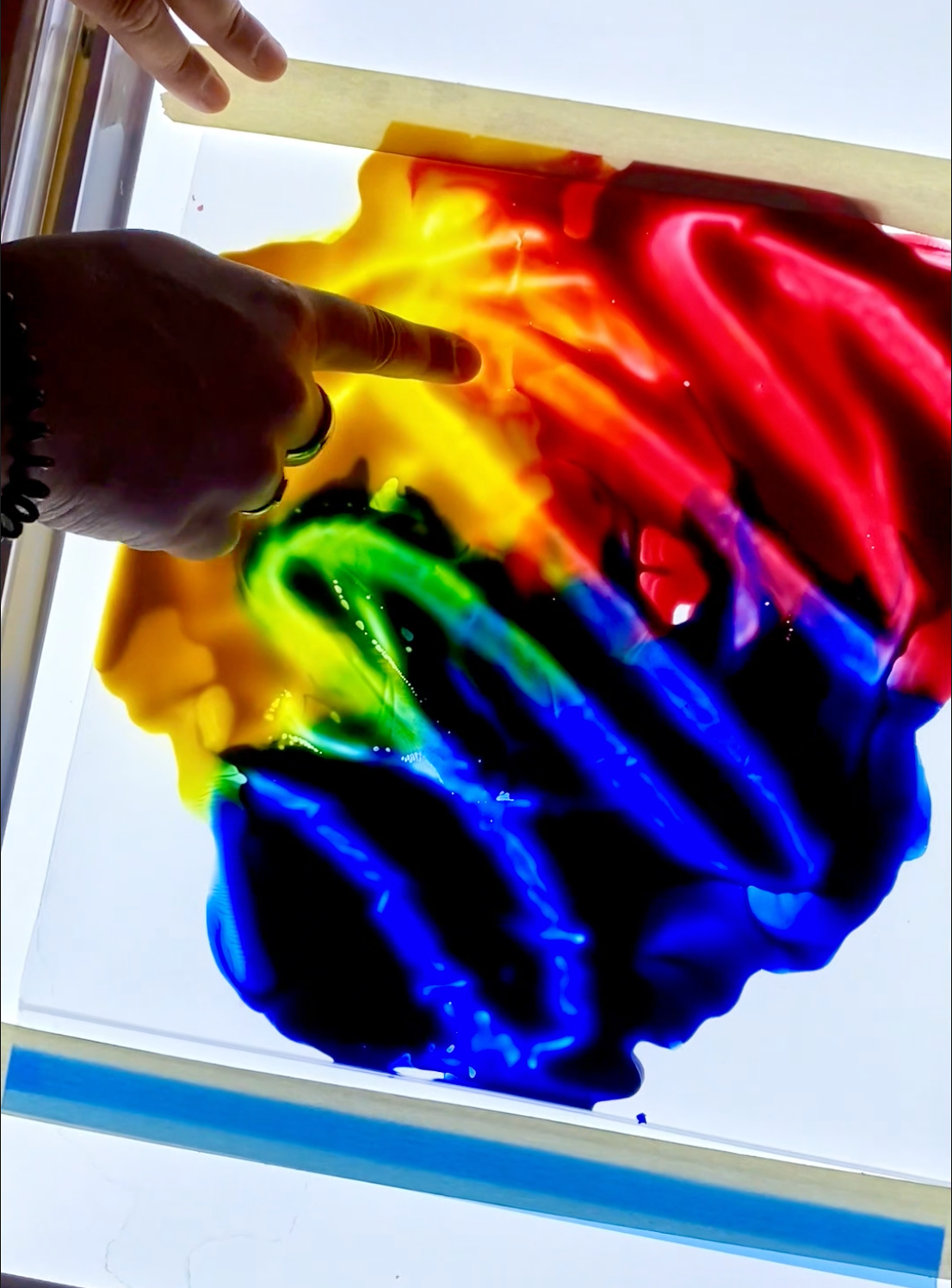

Light Panel Colour Mixing
This activity is such a fun way to explore primary colour mixing in a new perspective. As children explore mixing the colours they can also practice making unique patterns!
Take a freezer bag and pour primary colour paint in different corners of the bag! Squeeze out all the air in the bag and seal it. Once sealed place your bag on your light panel cover and tape it down. Place the cover on your light panel and turn it on!
Begin pulling the paint from each corner and mix them together to explore what colours they create! Once your colours are mixed start exploring creating patterns and drawing with paint scrapers or your fingers!
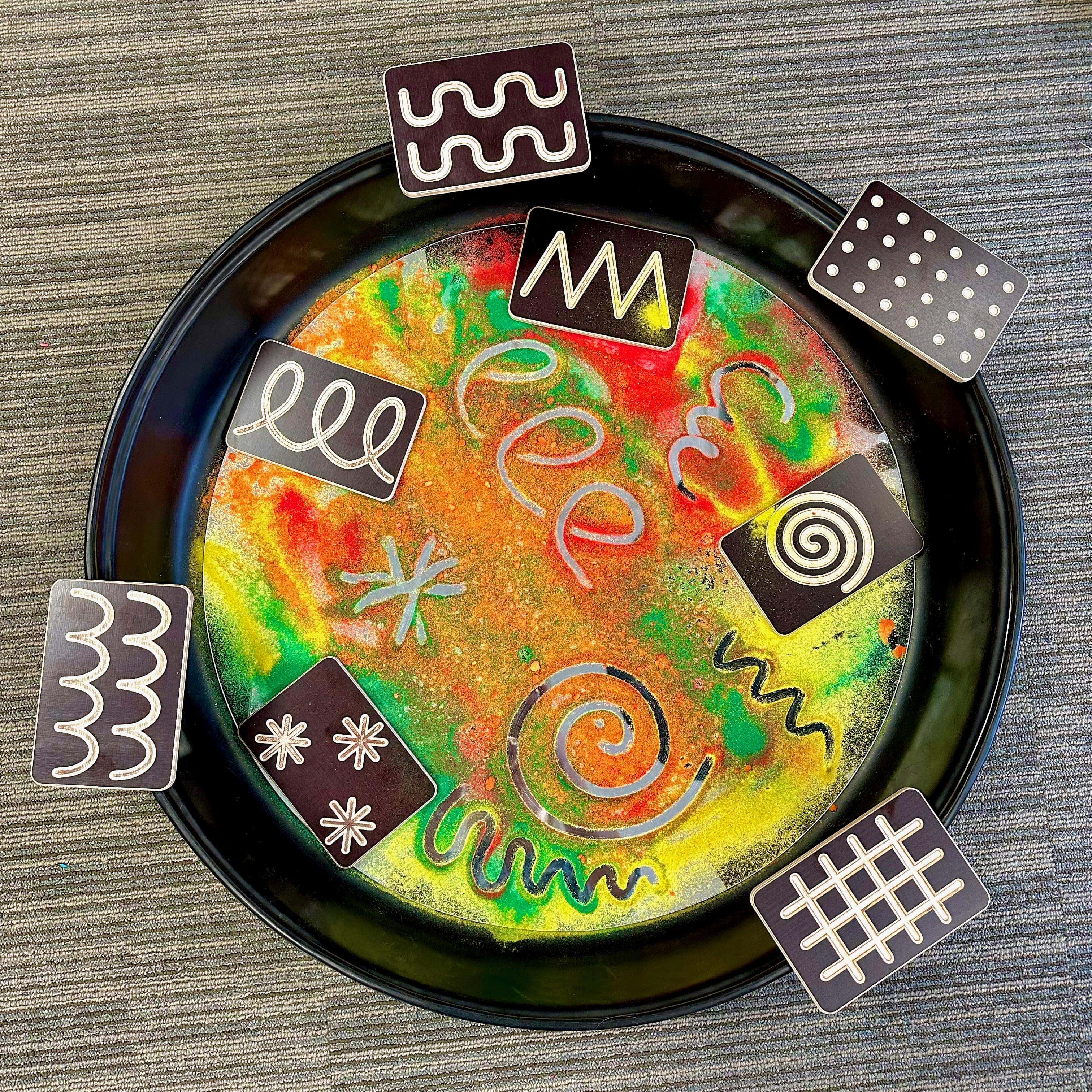

Mirrored Mark Making
What colourful marks and patterns can you create? Children will love seeing their patterns come to life through the mirror! This is a super fun and easy way to build fine motor skills, practice pre writing skills, and explore creating unique patterns and designs!
Simply slide a mirror insert into your deep tuff tray and choose a variety of bright coloured craft sand and gently sprinkle it over the mirror! Then add the handwriting tablets in and around the tuff tray to help inspire their mark making. Mirrors are an excellent inquiry tool for children, as they can help them see things in an entirely different way. The mirror adds dimension, light, reflection and a completely different perspective they will be able to observe the reflection of the structures completed but also in progress!
Children will love creating unique and colourful patterns and designs!
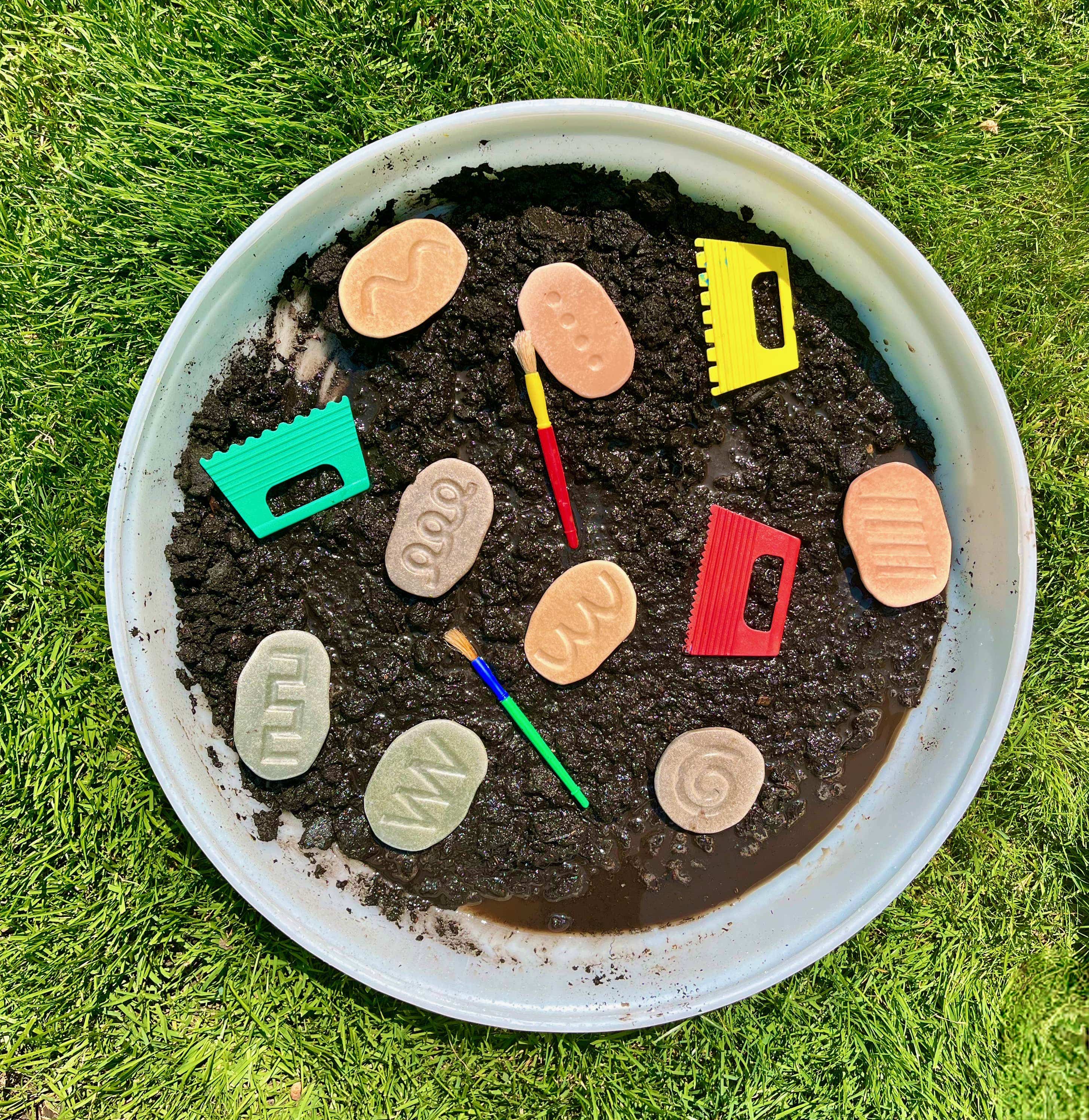

Muddy Mark Making
Can you make all kinds of marks and patterns in the mud?!
In the deep tuff tray pour a large amount of soil and spread it out across the bottom of the tray! Then add water and stir to create your mud. Add pre writing stones, paint scrapers and paint brushes. Then invite children to make and create different marks!
What is mark making and the importance for your child’s development? Mark making simply refers to the creation of different patterns, lines, textures and shapes. This term is used to describe the scribbles that children make!
Mark making is the beginning of a child’s journey towards writing and is an important step in a child’s development for handwriting, creativity and coordination.
Water Painting
This is a super fun and easy mark making activity that is all the joy of painting with easier clean up.
Simply place construction paper in a tray with water and paint brushes! Then invite children to paint the construction paper and make unique water designs. Children will explore being creative as they build fine motor skills and explore mark making!
Ways to extend the play:
-Practice letter & number formation
-Talk about what you notice with what they create
-See how long it takes your designs to dry away
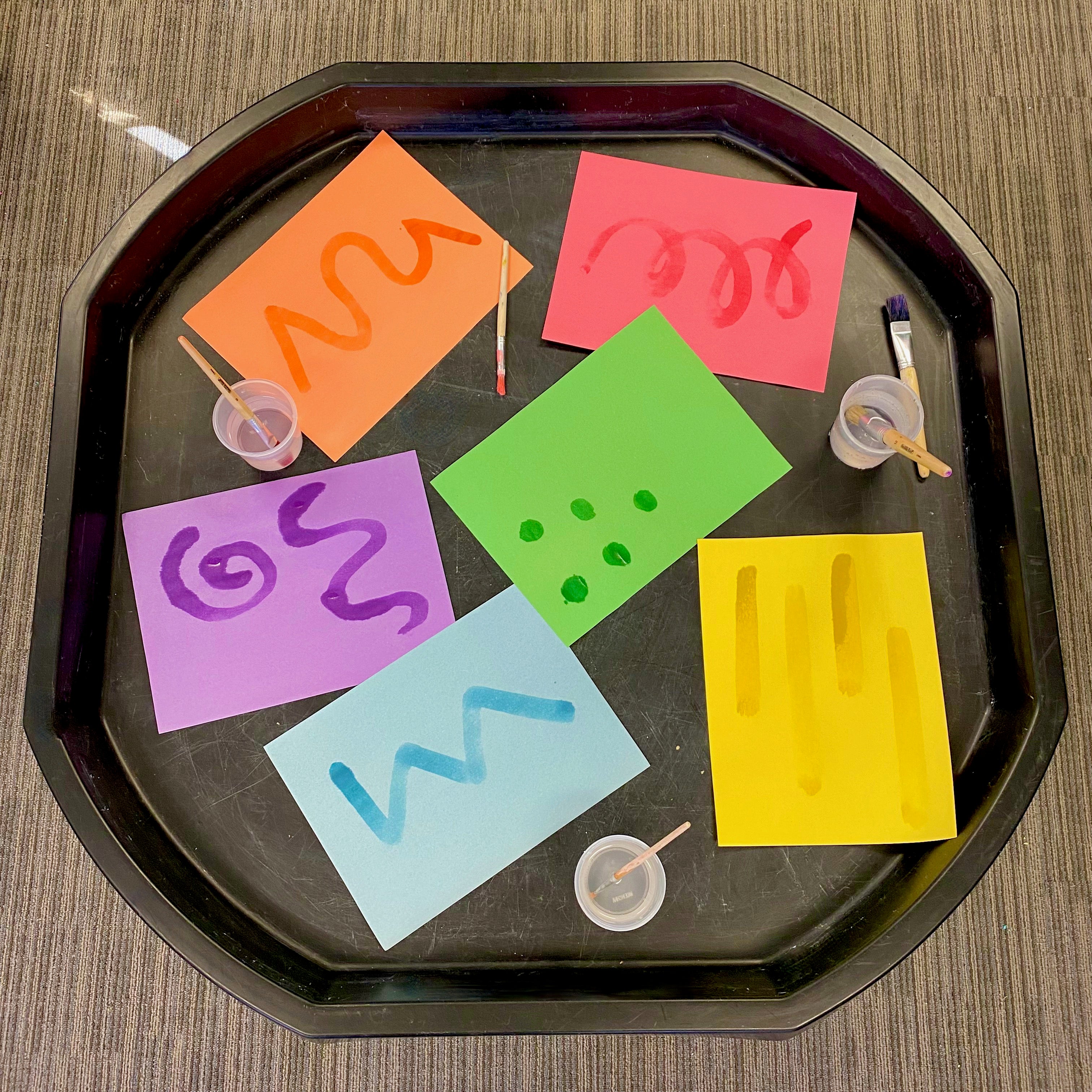

Q-Tip Painting Process Art
This is such a fun, easy and colourful way to explore process art, colour mixing and creating unique patterns as children build fine motor skills.
Simply cut a sheet or paper to the size of the bottom of the tuff tray and secure it with tape! Pour paint all over the paper and add q-tips either loose or taped together in different patterns for mark making and then invite children to create!
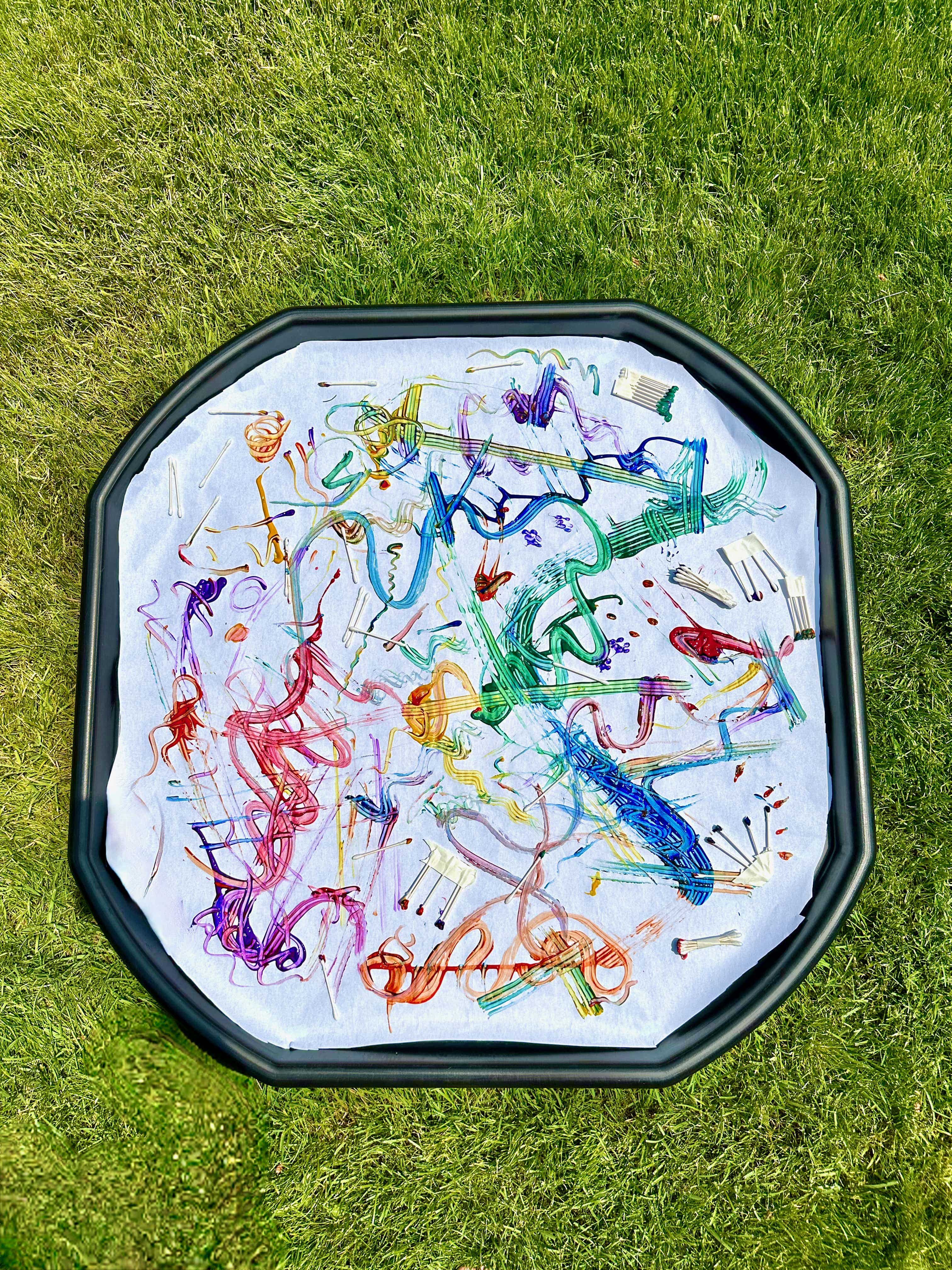

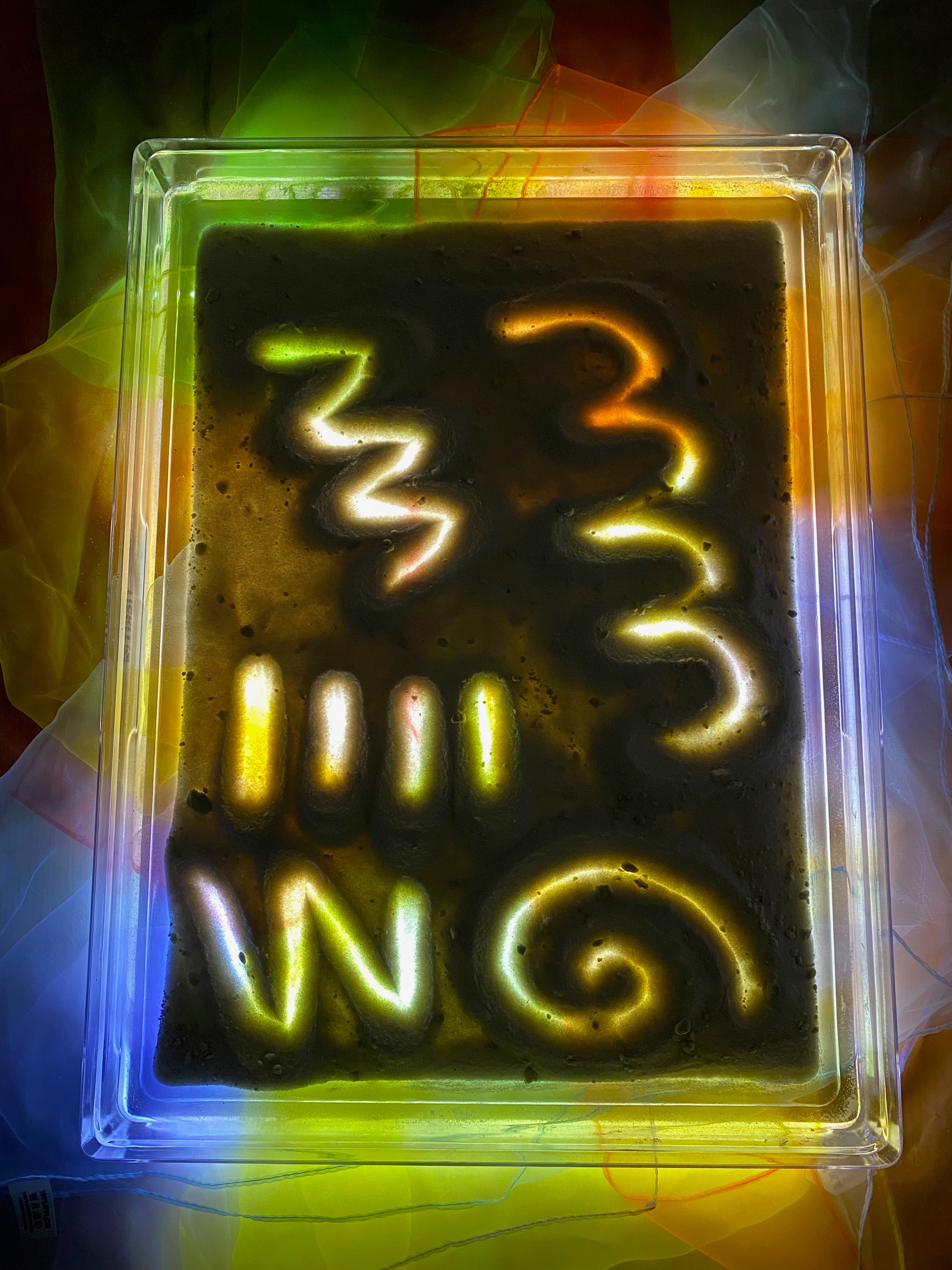

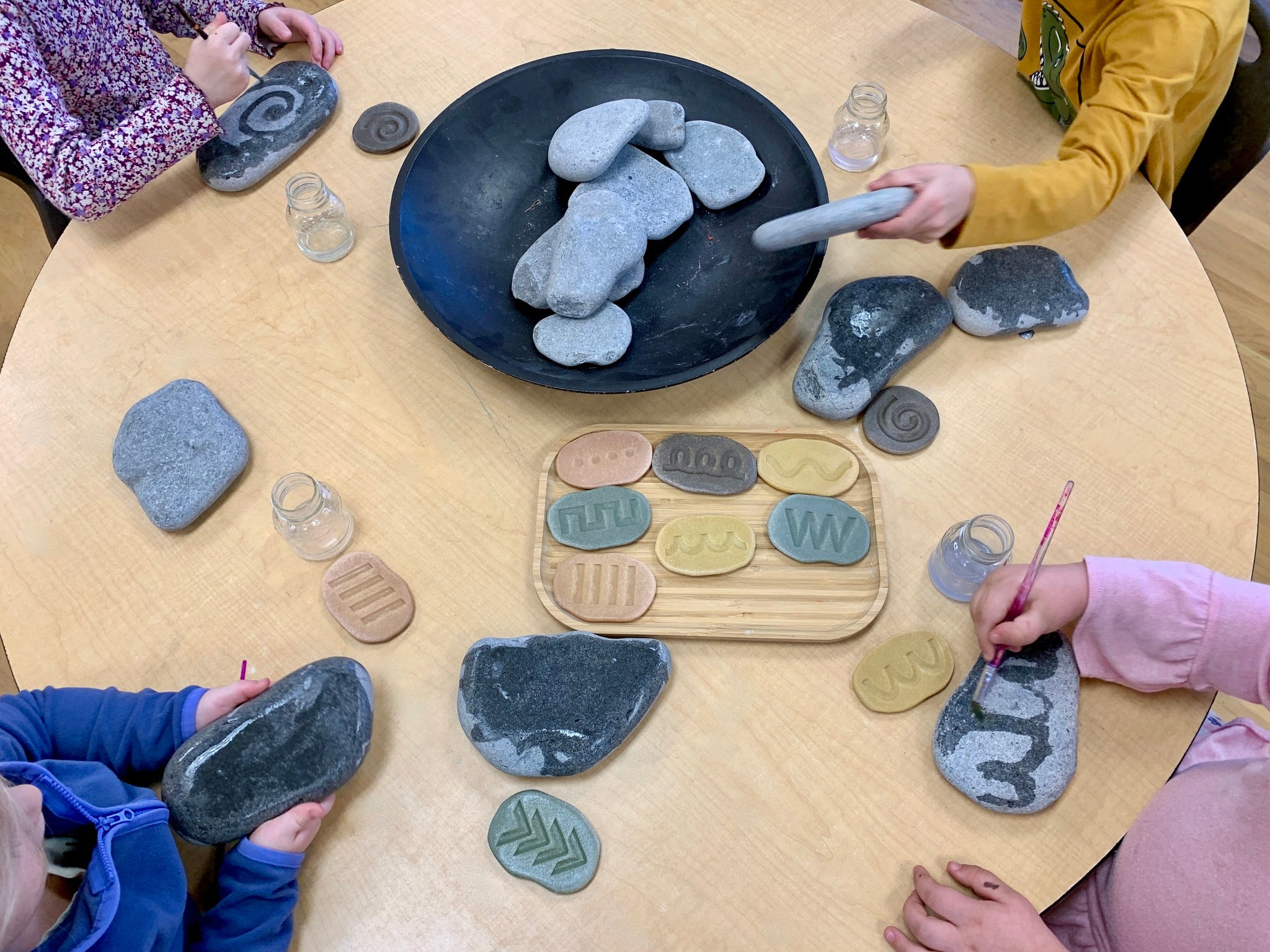

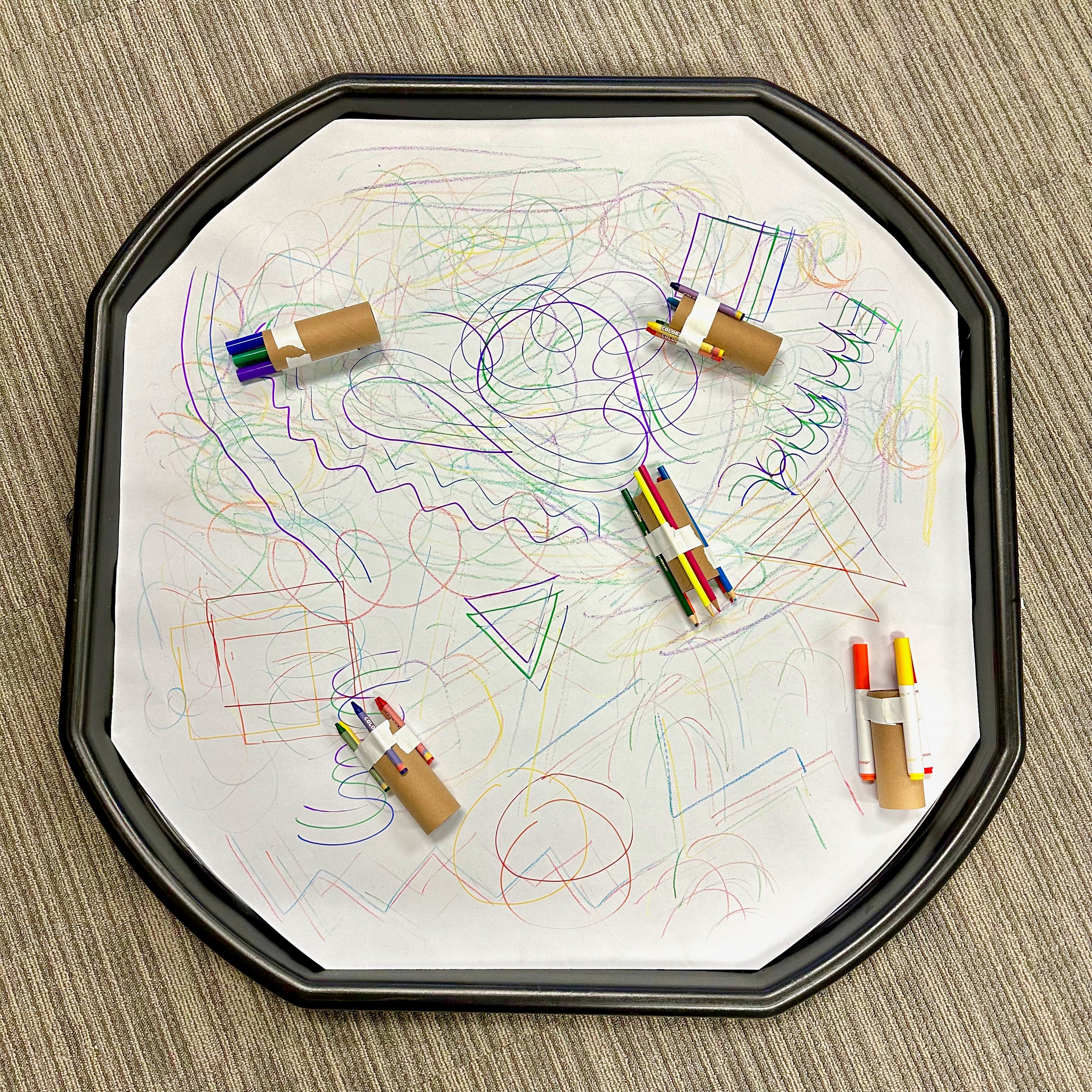

Cardboard Roll Scribblers Process Art
This is such a fun, easy and colourful way to explore process art, mark making and creating unique patterns as children build fine motor skills.
Simply cut a sheet of paper to the size of the bottom of the tuff tray or slide in the tuff tray paper and secure it with tape! Take cardboard rolls and assorted art materials like markers, crayons and pencil crayons and tape them to the cardboard rolls either equidistant apart or in different patterns to create unique marks.
Then invite children to create!
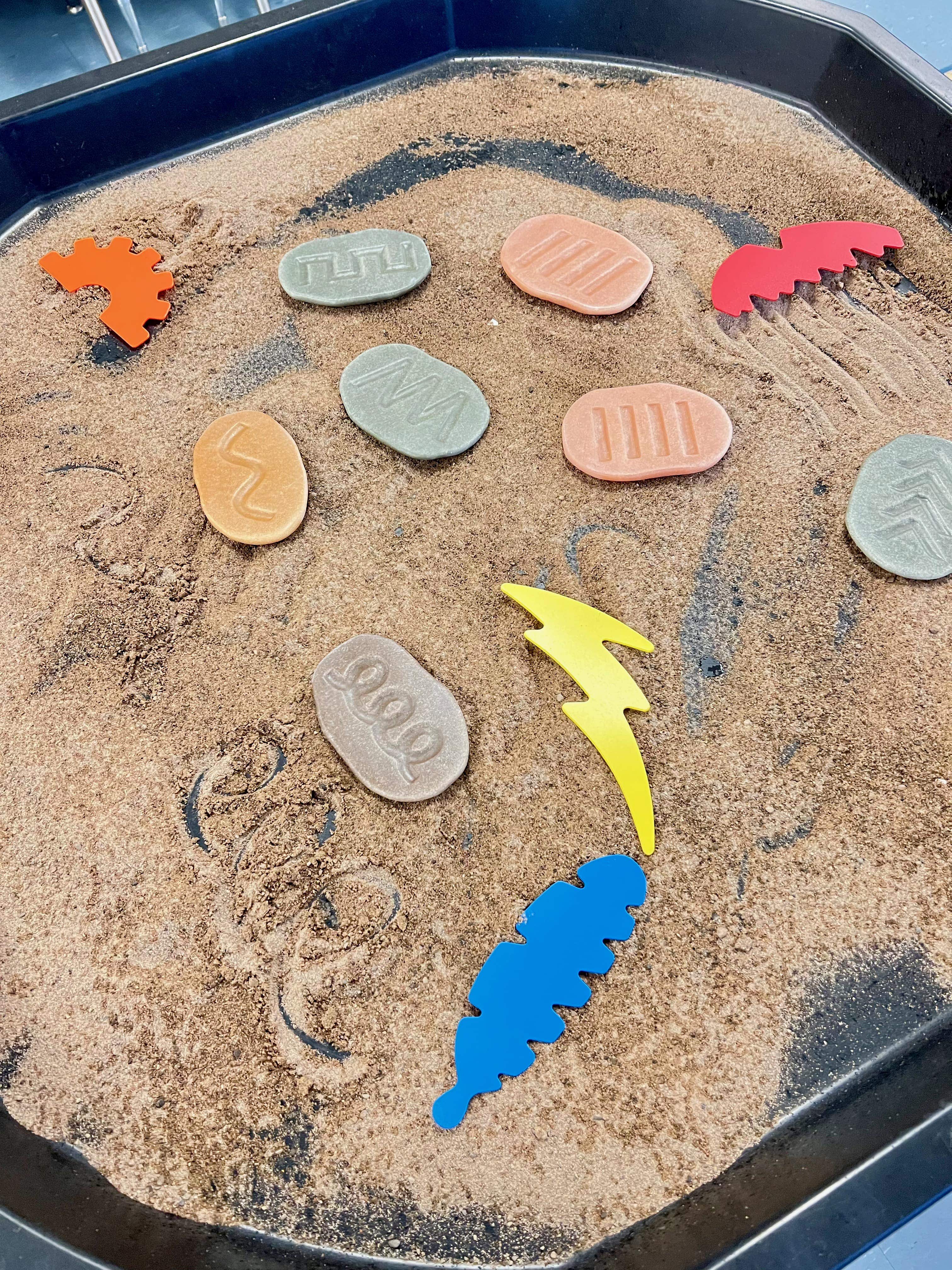

This is such a fun way to explore mark making and build pre-writing skills through sensory play!
In a tuff tray sprinkle a light layer of sand and add pre-writing stones or pattern cards to help encourage children to explore and create. To inspire their mark making creations add sand scrapers to help aid their formation!
What is mark making and the importance for your child's development? Mark making simply refers to the creation of different patterns, lines, textures and shapes. This term is used to describe the scribbles that children make!
Mark making is the beginning of a child’s journey towards writing and is an important step in a child’s development for handwriting, creativity and coordination.
This activity is a fun and easy way to explore and takes less than five minutes to set up! Plus you can easily modify it to practice number and letter formation.
Pre-Writing Paint Bags
Can you make all kinds of marks and patterns in the paint ?! This is a fun and easy way to practice mark making!
Take sandwich bags and gently pour paint in the bags and seal them! Then cut a piece of paper the size of the sandwhich bag and place it on the mini tuff tray and layer your paint bag on and tape them down! Add pre writing stones then invite children to make and create different marks!
What is mark making and the importance for your child’s development? Mark making simply refers to the creation of different patterns, lines, textures and shapes. This term is used to describe the scribbles that children make!
Mark making is the beginning of a child’s journey towards writing and is an important step in a child’s development for handwriting, creativity and coordination.


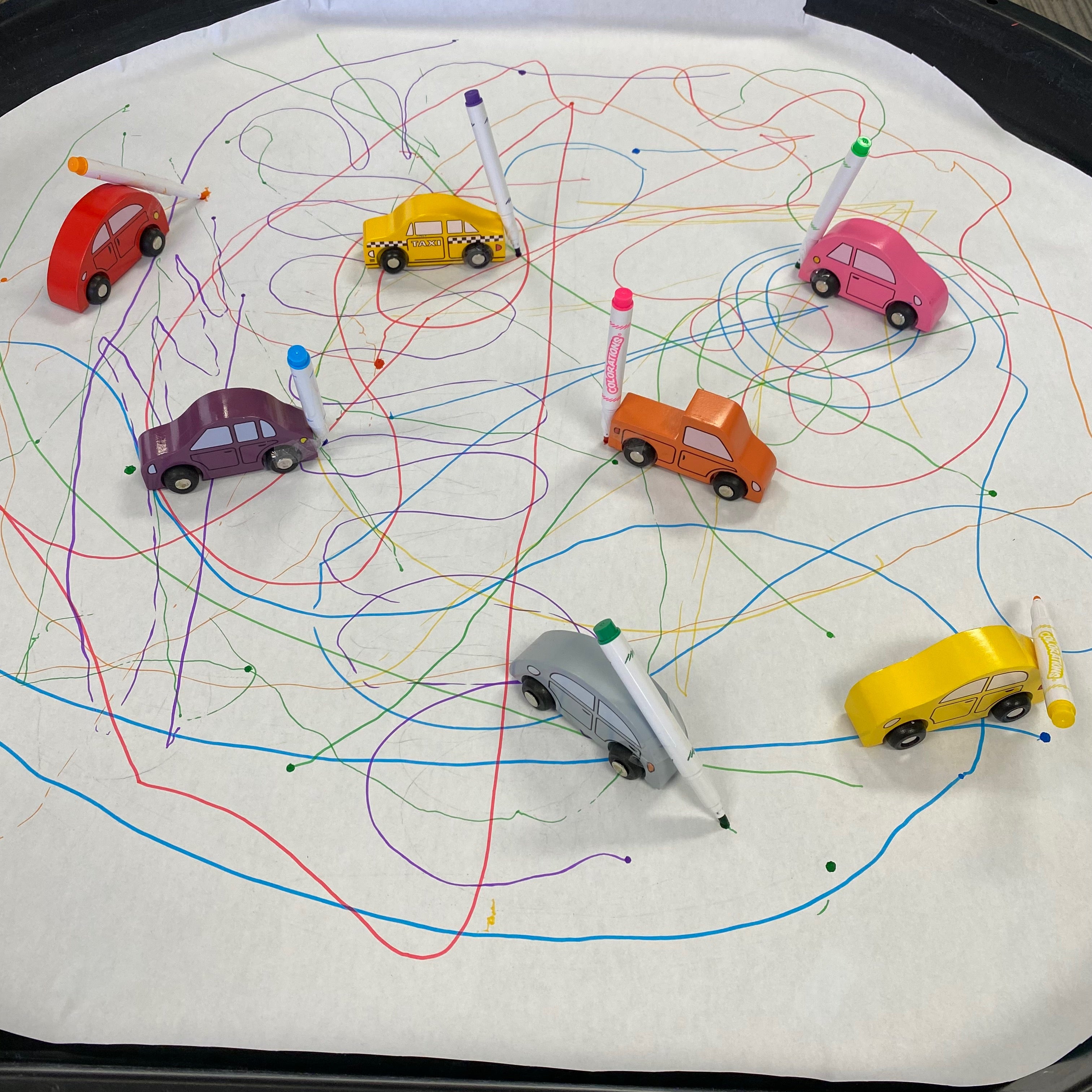

Car Track Mark Making
This is a fun and easy activity for children to explore mark making and build fine motor skills!
In your tuff tray cut a large sheet of paper to fit the bottom and secure it with tape. Then take each of your cars and secure a marker to the back with tape, angle it enough so the tip of the marker reaches the paper. Then encourage children to pick a car and begin creating their tracks!
Way to extend the play:
-Create different letters and shapes with the cars
-Create all different kinds of lines
Rainbow Rice Mark Making
This is such a fun way to explore mark making through sensory play! Children will love watching the light shine through to reveal the design they have created.
Place a light panel cover on the light panel and then gently pour rainbow rice over the cover and then pick it up and gently shake the cover the evenly distribute the rice.
Then turn on the light panel and place your mini black handwriting boards around the light panel and paint brushes then invite children to explore making the patterns and explore making their own marks.


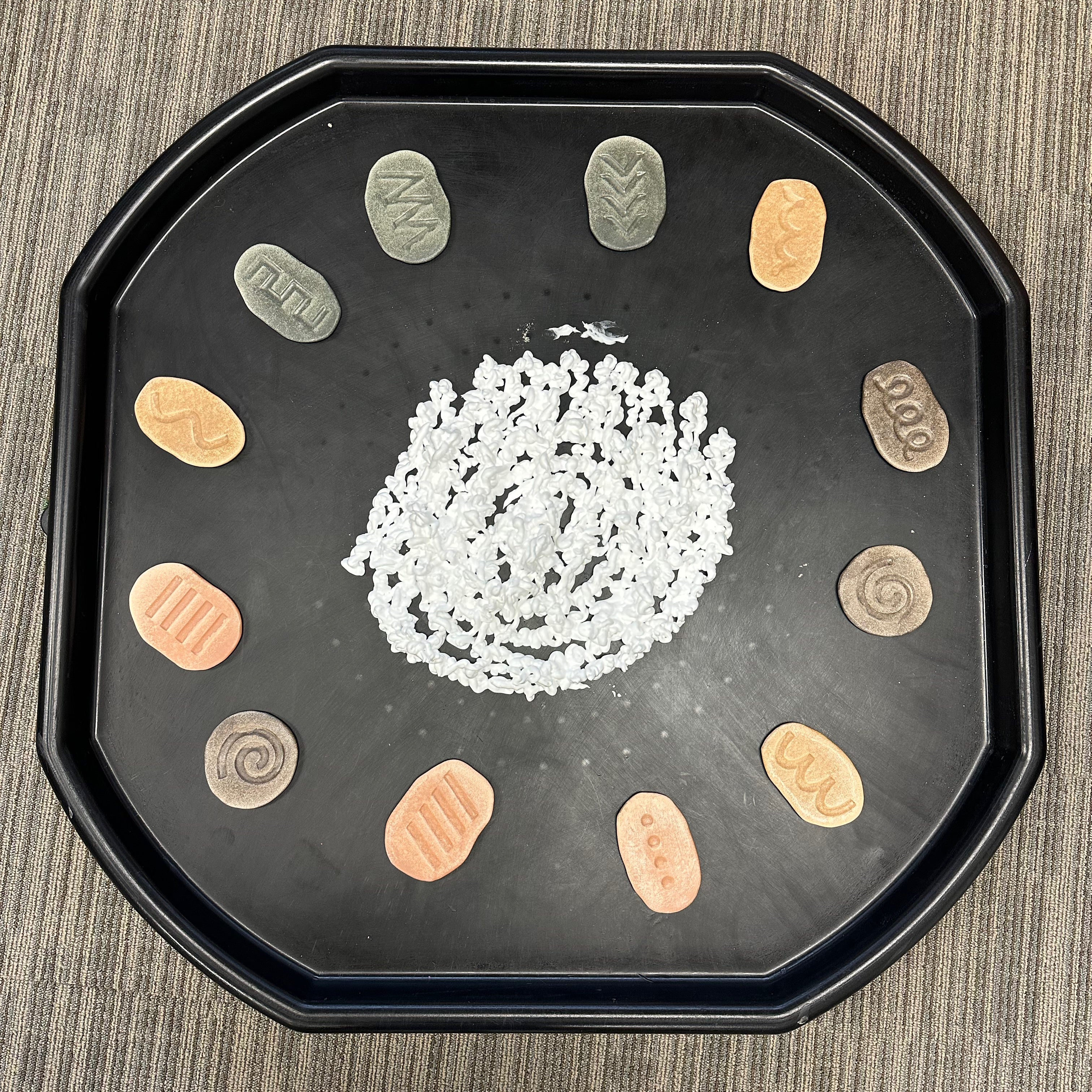

This is such a fun and easy sensory mark making opportunity for children to have fun and build key prewriting skills!
In your tuff tray take a can of shaving cream and spray a light layer of shaving cream and gently smooth it out. Then place prewriting stones around the shaving cream to help inspire kids formation! Children will love making marks and exploring the sensory texture of the shaving cream.
Pre-writing Portraits
Can you draw hair for our friend? This fun and easy activity allows children to explore mark making and build fine motor skills!
In your tuff tray roll out some white art roll and cut it out to the size of the tray, then secure with tape. Take a black marker and draw the shape of a bust of a human head with an open space for the hair! Add the prewriting stones as inspiration for crazy lines to form the hair.
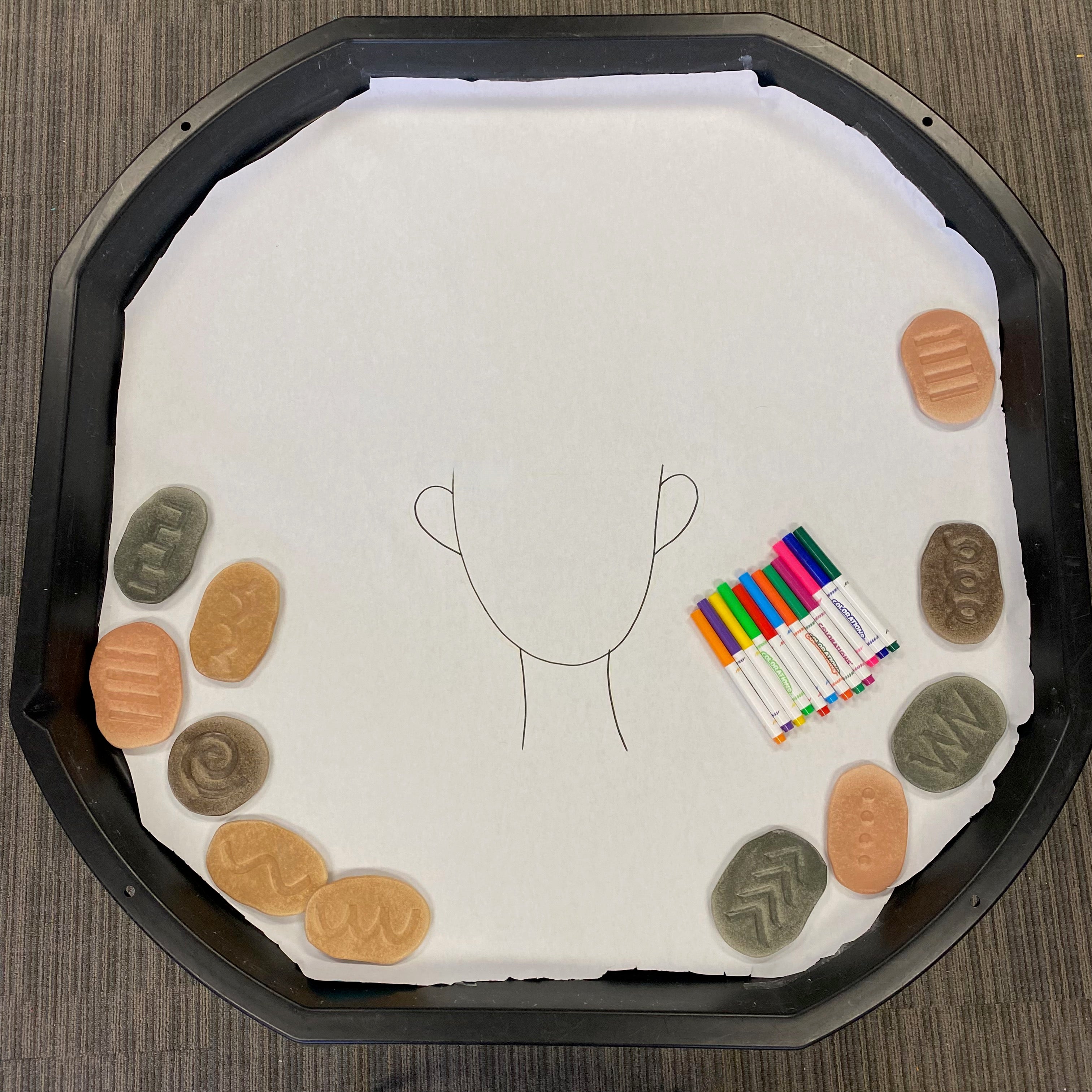

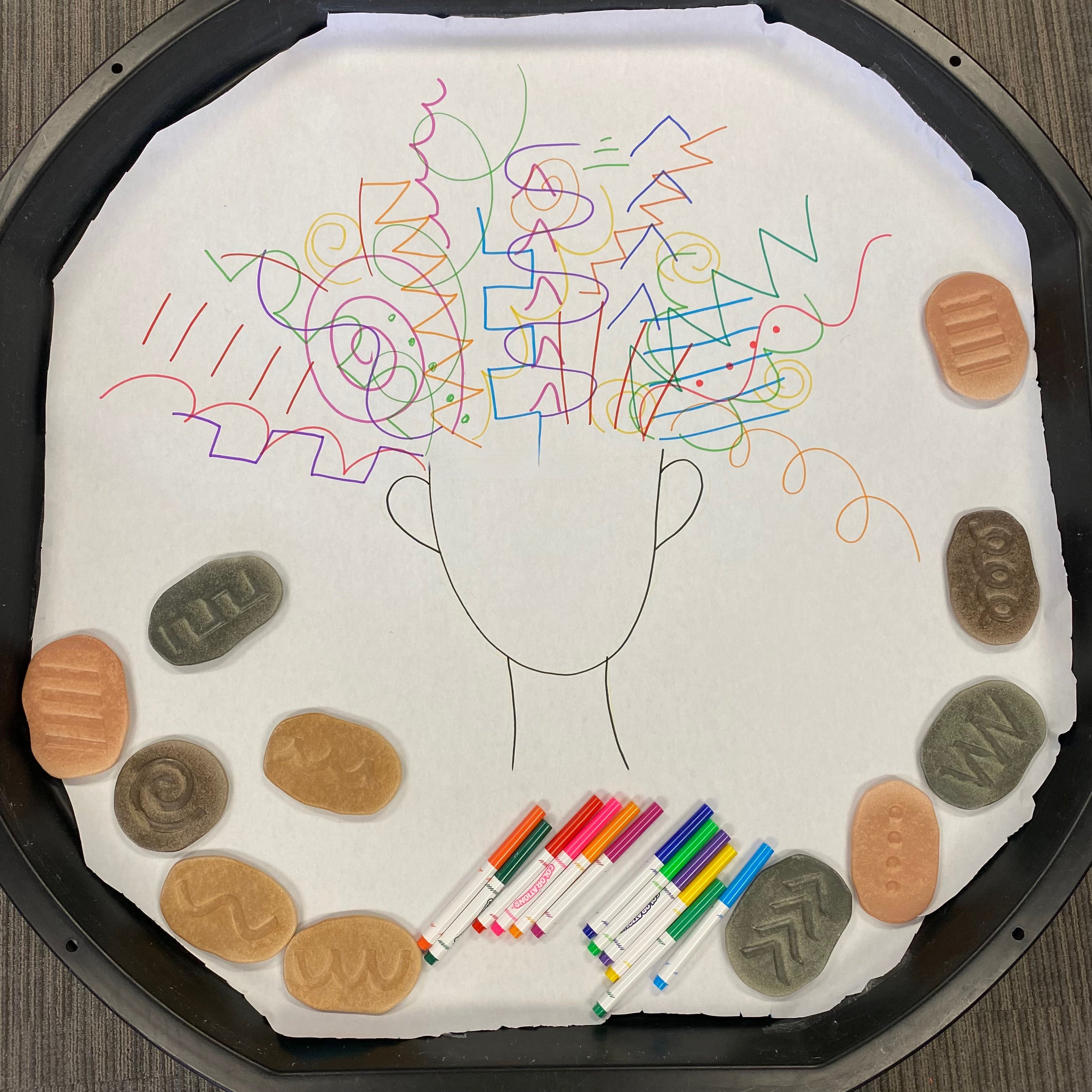

Painting with Water
This is such a fun and easy process art activity that is no prep and perfect for a hot day! All you need is water and painting tools.
Fill your PlayTray with water and then on the lid add your compartments and fill them with all kinds of painting tools like foam rollers, spray bottles, droppers, paint brushes etc. Then take your materials out to your driveway or a sidewalk and invite children to create!
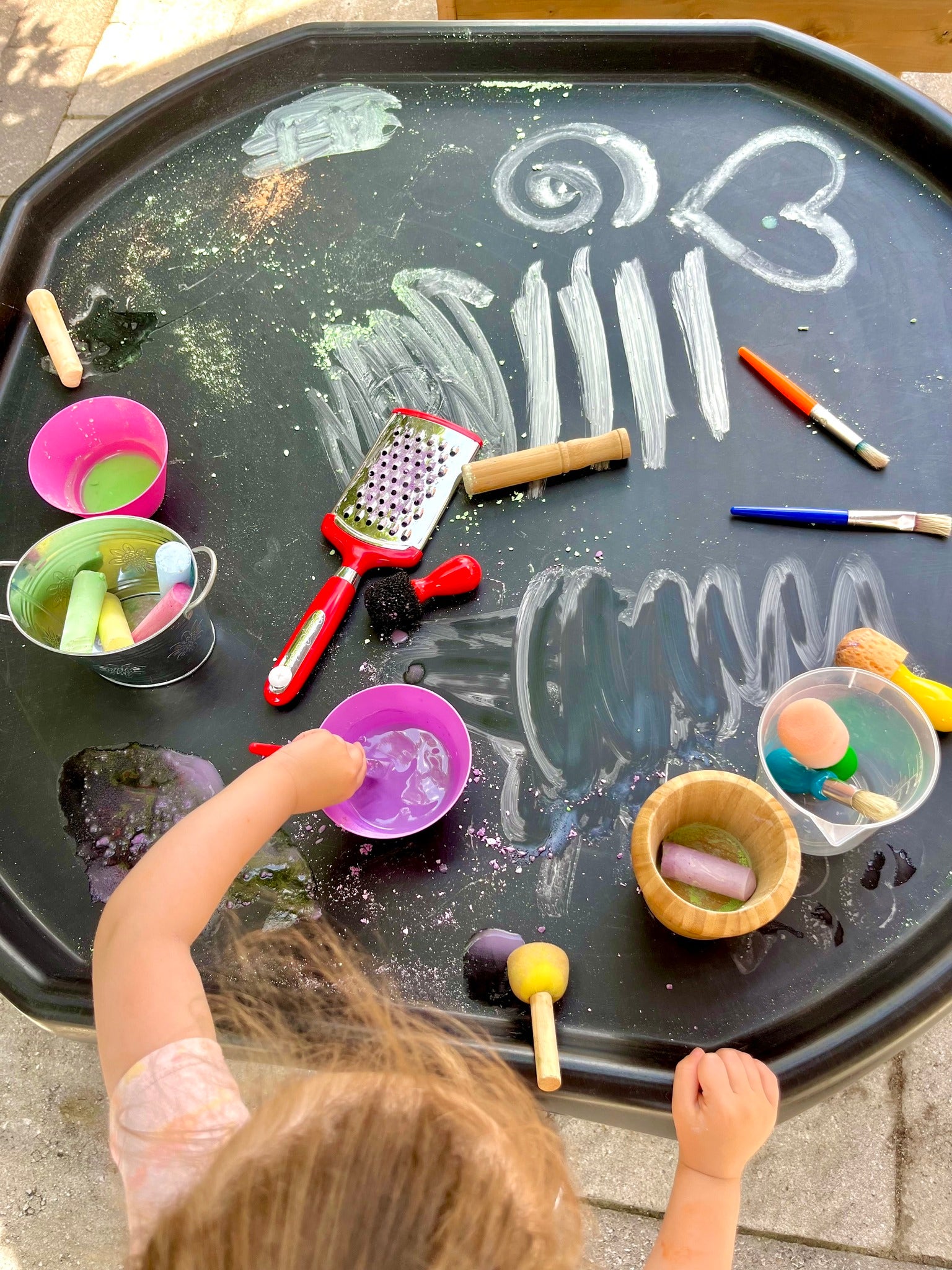

In conclusion, mark making is an essential activity in early childhood education that offers a host of developmental benefits. It is much more than children merely 'playing' with scribbles; it is a vital educational practice that supports the holistic development of young learners. Through engaging in mark making, children enhance their fine motor skills, paving the way for future writing abilities and other hand-eye coordination tasks. They also expand their cognitive abilities, learning concepts of shape, space, and size, while experimenting with cause and effect.
Integrating mark making into play-based learning not only enriches the sensory experiences of children but also fosters creativity, self-expression, and communication skills. As children narrate their mark making process or explain their drawings, they develop crucial language skills, including vocabulary building and sentence structuring. Furthermore, the tactile nature of mark making—feeling different textures and materials—stimulates sensory development, which is fundamental in these formative years.
For educators looking to optimize their teaching strategies, incorporating a variety of mark making activities is key. Use resources ranging from finger paints and chalks to digital drawing pads and sand trays. Each medium offers unique benefits and keeps the learning environment dynamic and engaging. Most importantly, celebrate all forms of marks made by children, recognizing that each line, dot, or smear is a step towards their growth in communication, creativity, and critical thinking.
By fostering an environment that values and encourages mark making, we lay a strong foundation for our young learners' future educational journeys. Let us continue to explore innovative ways to incorporate mark making into daily activities, ensuring that we cater to the diverse needs and potentials of every child. Through thoughtful integration of these activities, we can truly unlock the full potential of our students, setting them on a path of lifelong learning and success.

